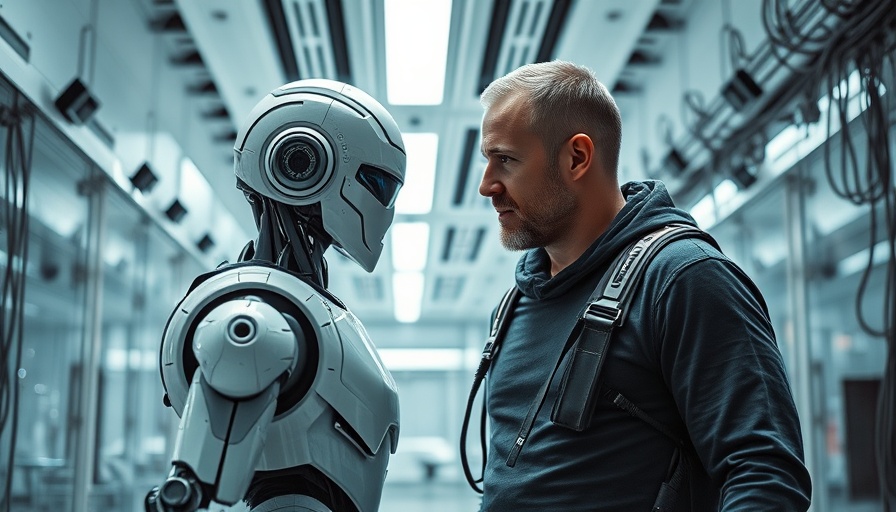
The Rise of the Solo Entrepreneur: Redefining Startup Success
In today’s fast-paced business environment, the landscape of entrepreneurship has witnessed a dramatic shift, particularly as we enter an era dominated by artificial intelligence and lean startup methodologies. The ambition of creating a billion-dollar company has now taken a new form—one where solo founders can achieve monumental success without the traditional backing of venture capital (VC) or large teams. This modern archetype of the 'solopreneur' is emerging as a reflection of aspirations that resonate deeply with today's innovators.
In The Quest for the One-Person One-Billion Dollar Company, the discussion dives into the rise of solopreneurs, exploring key insights that sparked deeper analysis on our end.
Embracing the Indie Founder Era
The concept of a solo entrepreneur achieving unicorn status—valued at over one billion dollars—once seemed unattainable. Yet, recent trends indicate a profound cultural shift towards solopreneurship. Entrepreneurs like Peter Levels epitomize this movement, showcasing that success can be found outside Silicon Valley's prevailing norms of team-centric startups. The rise of indie hackers, fueled by a bootstrap mentality, has inspired many who prefer self-reliance over conventional VC routes, turning what used to be deemed 'lifestyle businesses' into thriving enterprises.
AI: The Catalyst for Rapid Innovation
At the heart of this transformation is the ascent of artificial intelligence. Companies like Replit and Lovable are not merely coding tools; they are catalysts that allow individuals to create sophisticated applications with unprecedented speed and ease. The emergence of 'vibe coding'—where founder Antoine Oika believes that building a full-stack app should be as simple as taking a note—sheds light on how AI can unlock creative potential for countless solo entrepreneurs. This technological empowerment leads to rapid iterations and testing, allowing solo founders to build viable products in record time.
Success Stories That Set the Pace
The recent acquisition of Base 44 for $80 million within just six months of its inception exemplifies the heights that solo founders can achieve. Founder Ma Schlommo capitalized on AI-enhanced coding tools, attracting a user base of 250,000 before partnering with Wix to bolster growth. Such stories underscore how lean teams can outperform traditional startups by fiercely focusing on product development and customer engagement, while minimizing overhead costs and team sizes.
The Future of Entrepreneurship: A Hybrid Approach
While the notion of a one-person company is captivating, it’s crucial to understand that the future of entrepreneurship is likely to involve hybrid structures, combining AI agents, freelancers, and a core group of employees. This reimagined workforce can lead to efficient operations and significantly reduce the barriers to entry in various industries. As the AI revolution continues to evolve, it will promote a new definition of success that values agility and innovation over traditional scale.
Embracing the Lean Startup Culture
The lean startup paradigm is not merely an operational strategy; it symbolizes a cultural shift among aspiring entrepreneurs today. With heavy investments in team expansion and lavish office perks being sidelined, businesses are increasingly focused on creating impactful products and sustainable customer bases. Companies like Telegram and Midjourney exemplify how lean startups can generate enormous revenues with minimal headcounts, showcasing that efficiency is indeed the new flex.
Ready, Set, Innovate: What Lies Ahead?
The entrepreneurial landscape is undergoing a revolutionary change, with an increasing number of solo founders and small teams ready to make their mark. As they leverage AI technologies and innovative methodologies, the potential for one-person unicorns is not a distant dream but a near reality. Market experts predict that it could be just a few years before the first solo unicorn arrives on the scene, dramatically reshaping industries and driving conversations around the future of business.
In the age of artificial intelligence, aspiring entrepreneurs should harness these insights and start integrating AI into their workflows. The tools and resources are more accessible than ever, enabling solo founders to compete against well-established companies and innovate at unprecedented rates. As you consider your entrepreneurial journey, remember that the dream of becoming a solopreneur unicorn is now within reach.
 Add Row
Add Row  Add
Add 




Write A Comment